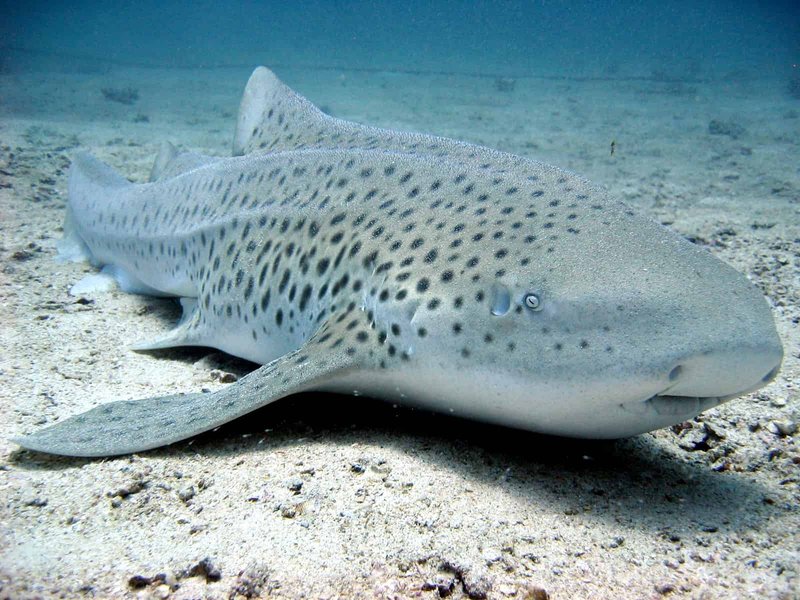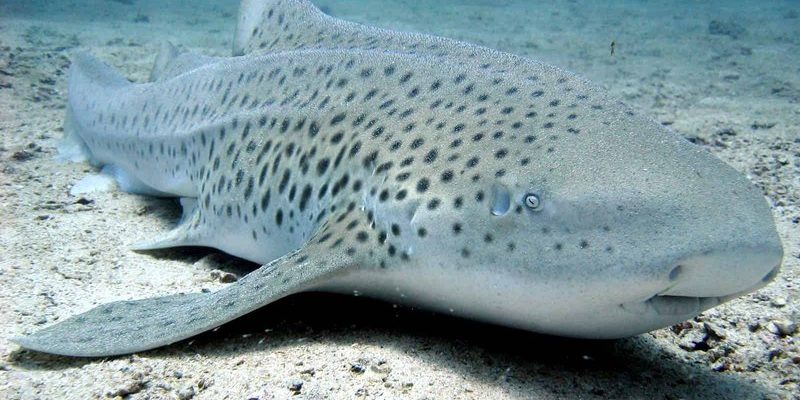
Zebra sharks, also known as *Stegostoma fasciatum*, are primarily found in tropical waters. They have a unique ability to blend into their surroundings, thanks to their distinct pattern of stripes. Imagine a kid wearing a striped shirt playing hide-and-seek in a field—it’s easier for them to blend in with their environment. Similarly, zebra sharks skillfully navigate through reefs and sandy bottoms, making them one of the more elusive sharks in the ocean. But how do they do it? And how do they communicate with each other in this vibrant underwater world? Let’s break it down!
How Zebra Sharks Use Their Senses to Navigate
Zebra sharks are like the ultimate explorers of the ocean. With their keen senses, they can navigate through murky waters, rocky crevices, and coral gardens. The ocean can be a tricky place to get around, but these sharks have some remarkable tools at their disposal.
1. Lateral Line System
One of their secret weapons is the lateral line system—a network of sensors running along their bodies. Think of it like having a built-in GPS that helps them detect changes in water pressure and movement. This system allows zebra sharks to sense nearby objects and other marine animals, helping them avoid obstacles and find prey. It’s a bit like how we can feel someone walking up behind us, even if we can’t see them.
2. Excellent Vision
Zebra sharks also possess good vision, particularly in low-light conditions. They have large, sensitive eyes that help them spot food and potential mates even in the dim light of the ocean depths. Imagine wearing special glasses that let you see clearly in a dark room—this is how zebra sharks perceive their surroundings, even when things get a little murky!
Understanding Their Foraging Techniques
Navigating isn’t just about getting from point A to point B—it’s also about finding food! Zebra sharks have some clever foraging techniques that make them effective hunters.
1. Bottom-Dwelling Predators
These sharks are primarily bottom-dwellers, meaning they spend a lot of time close to the ocean floor. They hunt by slowly gliding along the sandy bottom, using their keen senses to detect hidden prey. They often go after small fish, crustaceans, and even mollusks. Picture yourself searching for hidden treasure in your backyard—this is how zebra sharks scour the seabed for a tasty meal.
2. Unique Hunting Behavior
Zebra sharks have a rather graceful hunting style. They may use their mouths to gently probe the sand, stirring it up to uncover hidden meals. This behavior is not only effective but also quite mesmerizing to watch. It’s like seeing a painter delicately reveal the colors on a canvas through careful strokes.
Communication Among Zebra Sharks
While navigating skills are crucial, communication plays a significant role in the lives of zebra sharks, too. You might wonder how these sharks talk to each other or express themselves.
1. Body Language
Zebra sharks primarily rely on body language to communicate. They use their movements to signal intentions, whether that means showing aggression, courtship, or simply feeling comfortable in their environment. When two zebra sharks meet, you might notice them swimming close together, circling each other, or even rubbing against one another. It’s much like the way people might nod or smile to show they’re friendly.
2. Chemical Communication
Interestingly, zebra sharks also communicate chemically. They can release pheromones into the water to signal their reproductive status or to attract mates. Imagine sending out a scent that says, “Hey, I’m ready to mingle!” This subtle form of communication is essential for their reproductive success, helping them find partners during mating seasons.
Why Navigation and Communication Matter
You might be wondering why all this matters. After all, how do zebra sharks’ skills impact their survival and the ecosystem as a whole?
1. Ecosystem Balance
Zebra sharks play a vital role in maintaining the balance of their ecosystem. By controlling the populations of their prey, they help prevent overpopulation of certain species, which can disrupt the delicate balance of marine life. In this sense, their navigation and communication skills are critical not just for their survival but for the health of the entire ocean.
2. Adaptation to Changes
Understanding their navigation and communication also gives us insight into how zebra sharks adapt to changes in their environment. As human activities, such as pollution and overfishing, impact ocean life, these skills become even more essential. By studying how zebra sharks navigate and communicate, scientists can gather valuable information about the overall health of marine ecosystems.
Challenges Zebra Sharks Face
While zebra sharks are incredible creatures, they face significant challenges in today’s world. Understanding these challenges can help us appreciate their importance and advocate for their protection.
1. Habitat Loss
One of the most pressing issues is habitat loss due to coastal development, pollution, and climate change. As their homes are destroyed or altered, zebra sharks may struggle to find food and suitable spots for breeding. Picture a beloved park being transformed into a shopping mall—it’s tough to navigate when everything has changed.
2. Overfishing
Zebra sharks are also affected by overfishing, whether directly or indirectly. Their prey may decline, and bycatch (unintended capture of non-target species) can threaten their populations. This situation is a real concern as it disrupts the delicate balance they help maintain in their ecosystem.
Efforts to Protect Zebra Sharks
So, what can be done to help zebra sharks thrive in their natural habitats? A few dedicated conservation efforts are already underway.
1. Marine Protected Areas
Creating marine protected areas (MPAs) is one strategy that helps safeguard zebra sharks and their environment. These designated regions offer safe havens where sharks can thrive without interference from human activities. Think of it as a special sanctuary where they can roam freely and safely.
2. Awareness and Education
Raising awareness about the importance of zebra sharks is crucial for their protection. By educating communities about their role in marine ecosystems and promoting sustainable fishing practices, we can help ensure a healthier future for these fascinating creatures.
Zebra sharks are remarkable navigators and communicators in their underwater world. They use a mix of keen senses, graceful movements, and subtle chemical signals to thrive in their environment. We’ve explored everything from their hunting techniques to the challenges they face and the steps being taken to protect them.
By gaining a deeper understanding of how zebra sharks navigate and communicate, we not only appreciate their unique adaptations but also recognize the importance of preserving their habitats. Every small effort counts, and together we can work towards a future where zebra sharks continue to glide gracefully through our oceans, reminding us just how interconnected life is beneath the waves.

